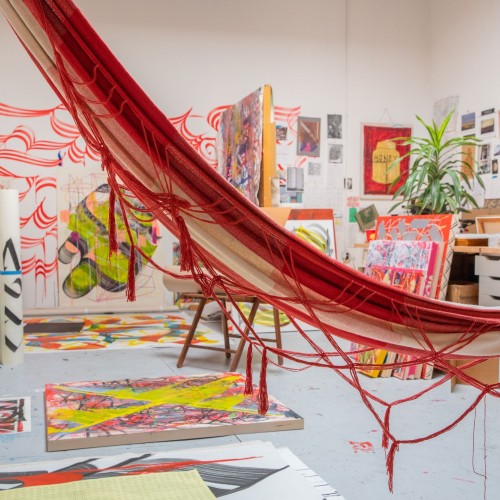In her light-filled workspace, the textile artisan shares her influences.
Sarah Winston Weaves HeritageFormer partner of the award-winning design team Bells & Whistles, Jason Lane is now principal of JXL Studio. His hands-on atelier is dedicated to the design and build of sculptural objects and interiors in the applied art tradition, inspired by subtle forms of modern architecture and the cinematic visuals of masters like Kubrick and Fellini. He was studying philosophy when he left school to become a founding member of the experimental group ADRV (1987-1999), then transitioned to the world of design and the craft of woodworking. He went on to produce custom furniture, architectural elements and stage props for a select clientele, most notably Dita von Teese.
Tell us about the vision for the piece you’re building for Liberty Station.
Tessellation #1 is a meditative sculptural monolith made from hand-cast tessellated concrete with an accompanying hewn beam bench set within the shade of two existing magnolia trees. The forms and fabrication processes are inspired by the legacy of crafts in San Diego. The installation provides a contemplative place to just be, experiencing the play of light, weather and time. Inset will be a bench of timber that speaks to Liberty Station’s original 1920s grand post-and-beam roof construction and the tradition of the shipwright in the legacy of naval shipbuilding. One side will be pocketed to hold plants, and the other side will be a mandala of interlocking shapes radiating out. The walls will be about 6' x 10'. It will be heavy, but modular, transported in separate cases. There are three primary shapes that fit together. The first step is R&D, to understand how the volume will sit in the space and how it will work with the trees to develop a full-size maquette in paper.









